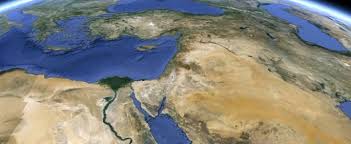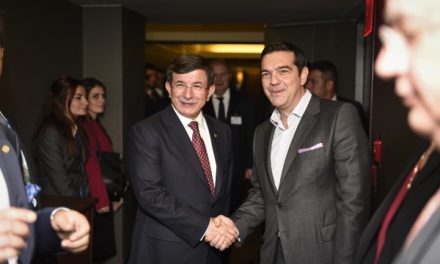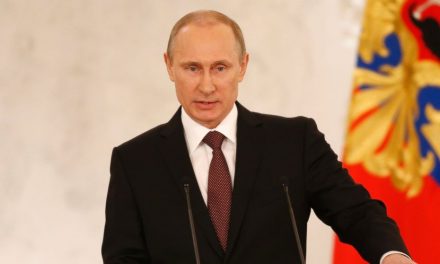By Charis Chang, news.com.au
AS THE defeat of Islamic State looms, experts are worried that a far more destructive Middle East war could flare up in its place.
With IS cornered, the jostling has already begun between players like the US, Russia and Iran over who will fill the power vacuum in Syria.
As each of them asserts their dominance, experts are worried the US could be drawn into a major war with Iran.
There have already signs of tensions, with a number of incidents causing concern among experts.
Moscow has now suspended a hotline intended to prevent confrontations in Syria’s crowded air space, and warned it could consider US-led coalition planes “targets”.
The rising tensions prompted Australia to announce it was suspending its participation in air missions over Syria.
So should we be worried? Here’s what’s going on.
JOSTLING OVER POWER VACUUM
Islamic State, also known as ISIS, is close to collapse and Dr Ben Rich of Curtin University said this would probably happen in the next one to two years.
As the last IS fighters are pushed out of areas such as Mosul in Iraq and Raqqa in Syria, world powers are starting to think about the situation in Syria — and who will be left in power.
Russia supports the current Syrian leader, President Bashar al-Assad and so does Iran, which has been supporting groups pushing back against anti-government forces.
But the US doesn’t, partly because al-Assad is hostile to the US but also because of human rights violations in Syria. The US has been supporting a different set of fighters, who are also against IS but are also anti-Assad.
Each of the countries seem to be maintaining control over certain areas of Syria, and these are slowly moving towards a collision point.
On the weekend, America shot down a Syrian Su-22 fighter plane after it dropped a bomb near Raqqa where the US-backed Syrian Democratic Forces is based.
Dr Rich said it was the first time the US had shot down a Syrian jet and even though it was in an area claimed by the US, it was still on the sovereign territory of Syria.
“By any legal definition this is an act of war,” he said.
The shooting prompted a furious reaction from Russia, which threatened to target the US and its allies flying over eastern Syria, west of the Euphrates River.
It also suspended its “deconfliction” hotline with the US, which is a phone line that connects the two countries aimed at minimising incidents in Syrian skies.
But in the early hours of Tuesday morning, the US followed up by shooting down an Iranian-made drone operated by pro-regime forces in southern Syria, prompting growing international concern over rising tensions between the two sides.
A statement from the US said the drone was destroyed as it neared the Al-Tanaf base along Syria’s eastern border.
“It displayed hostile intent and advanced on Coalition forces,” the statement said.
UN Secretary-General Antonio Guterres warned that the incidents could be “very dangerous” and lead to an escalation of the war.

Map showing the conflict in Syria.Source:news.com.au
IRAN MAKING MOVES TOO
At the same time the Americans were taking down the Syrian jet on Sunday, Iran was making its own power play — firing missiles into eastern Syria near Deir Ezzor.
Iran said it was targeting IS, which still controls Deir Ezzor, after a terror attack in Tehran earlier this month but there could be other motives at work.
Some believe Iran has ambitions in the area and that it wants to secure a road corridor from Iran through Iraq, Syria and Lebanon.
Dr Rich said Iran had traditionally used Syria as a land bridge to support Hezbollah in Lebanon, supplying them with arms transported through Syria.
“If Syria goes, then Hezbollah will go without direct support from Iran,” he said.
“It would prevent Iranians reaching out and supporting Hezbollah directly and they would have to go through different routes which would be more difficult to ensure.”
Deir Ezzor is also located on the road to Iraq and some believe the major roads connecting Iraq and Syria will increasingly become focus points for conflict.

Iran has transported arms to Hezbollah in Lebanon through Syria and Iraq.Source:Supplied
BLOCKING IRAN’S AMBITIONS?
While Iran tries to make inroads into Syria, the US doesn’t look like it will give up territory without a fight.
The Americans reportedly moved new rocket systems into the At Tanf area and last week Pentagon spokesman Captain Jeff Davis warned: “If (the Iranian-backed militias) resume their advance, coalition forces will defend themselves”.
This is all happening amid escalating anti-Iran comments from US President Donald Trump and one expert has described this as “explosive” situation.
Iran scholar Trita Parsi told Fairfax: “Look at the totality of the Trump administration’s statements on Iran — sanctions, hints of regime change, no diplomacy … these were the ingredients of the Iraq war”.
The Trump Administration has even hinted at regime change in Iran.
Last week US Secretary of State Rex Tillerson said Washington would “work toward support of those elements inside of Iran that would lead to a peaceful transition”.

US forces patrolling on the outskirts of the Syrian town of Manbij, as part of the coalition-led battle to seize Raqqa. Picture: Arab 24 network, via APSource:AP
Dr Rich said the possibility of a war between Iran and the US had been a “low key concern” for quite some time but he didn’t think either party wanted that.
“Iran is quite cautious about the prospect of war and they have a very powerful historical memory of the Iran/Iraq conflict and its destructiveness,” he said.
“The US also remembers its war in Iraq and the damage to its prestige so I don’t think either side is itching for that fight.”
Dr Rich believes there will be ongoing low-intensity conflicts in the region but this would likely be played out between proxy groups and through the support of militia groups.
“I don’t see the prospect of conventional conflict as particularly likely.”
However, he said there were concerns about whether these slight escalations could be inflamed.
“What happens if there is a domino affect? What happens if a wrong attack occurs, will we see escalation? Particularly with the current individual we have in the White House.”
WHAT WILL AMERICA DO?
So far, while US President Donald Trump has stepped up military resourcing, Dr Rich didn’t think he had been in power long enough to change the dynamic in the Middle East too much.
The concern is that US and its allies could potentially sleepwalk into a conflict.
“It’s what happened in Afghanistan,” Dr Rich said. “We had a fairly limited mission but it kept expanding and kept expanding.
“This is the concern in Syria — we keep building up our forces, there’s mission creep, we’re expanding our presence … putting in conventional troops.
“Where does this stop? When does it end? When do we say ‘mission accomplished’ and pull out?
“Does it end in Damascus, with US tanks rolling through the streets, or does it end in Raqqa with ISIS being ousted from power?”
Russia has already called America’s presence in Syria illegal.
“It is absolutely illegal,” Russia’s Deputy Foreign Minister Mikhail Bogdanov said Tuesday of the presence of American forces in Syria.
“There has been neither a Security Council decision, nor a request from the official authorities of the Syrian Arab Republic as a sovereign state,” Russia’s Interfax news reported.
Dr Rich said former US president Barack Obama justified the country’s presence in the region as part of the fight against Islamic State, but there was also the broader US aim to remove the Assad regime.
“A lot of people are starting to think, ‘what happens after ISIS is gone?’.
“Will the US pull out? Or maintain its presence in Syria but not actively try to push for regime change? These are the questions that are being batted around at the moment.”



















